Homemade ejector for a pumping station: a step-by-step example of manufacturing
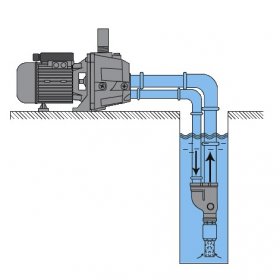
Almost everyone who was involved in arranging autonomous water supply was faced with the problem of insufficient water supply to the suction pump. From the course of physics, we know that atmospheric pressure allows water to be supplied from a maximum of 9-meter depth. In practice, this figure is reduced to 7 and even to 5 m confident feed. An ejector for a pumping station will help solve the problem, which allows to increase the pressure of water. The industry produces such equipment, which is part of pumping stations and pumps.
Device and principle of operation of the installation
An ejector is a device that betrays the energy of another, less mobile medium moving at a high speed. In the tapering section of the apparatus, a zone of reduced pressure of one of the media appears, provoking the suction of the second medium into its flow.
That allows her to move and move away from the suction point, using the energy of the first medium for movement.
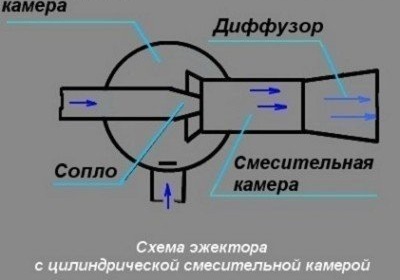
The internal structure of the ejector. This equipment is used to provide extra meters of water rise and to protect the pump or station from unwanted dry running in the event of a sudden drop in the well level.
Installations with an internal ejector are intended for pumping water from shallow, not more than 8 m, wells, storage tanks, wells or reservoirs. A distinctive feature of the device is the ability to "self-priming", allowing you to capture water below the level of the inlet pipe. Therefore, for the correct operation of the apparatus, it is necessary to pre-fill it with water. The impeller of the device pumps liquid, sends it to the entrance to the ejector, thereby creating an ejection jet.
She, moving along a tapering tube, accelerates. Accordingly, the pressure inside the jet decreases. Thus, the pressure inside the suction chamber also decreases significantly. If you connect a pipe to the inlet pipe and lower it into water, it will begin to be sucked into the device with force. Then the liquid is sent to the suction chamber, slows down and is directed along the diffuser to the outlet, gradually increasing its pressure.
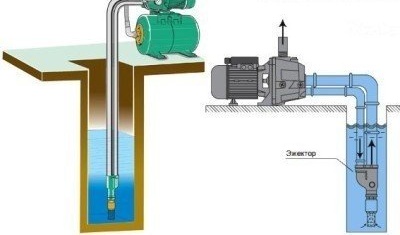
Pump station with remote (left) and internal (right) ejector. Equipment with a remote ejector can be installed at a decent distance from a well or well
Another variety of surface installations is a pump station with a remote ejector. They are distinguished by the presence of an external ejector, immersed in a source of water supply. The device and scope of installations in general is the same as for analogues with an internal ejector. A significant difference is the ability to use the device at depths of more than 10 m. In addition, such pumps are extremely demanding on the installation conditions of an external ejector. The pipes connecting it to the pump must be installed strictly vertically, otherwise the inlet line may be air and will lose operability.
It is most optimal to use such a device for working at a depth of 15-20 m, although some manufacturers indicate that the maximum mark is 45 m. It is clear that with an increase in the lifting height, the pump performance deteriorates. In general, devices with a remote ejector have lower efficiency than with an internal one.
It is only 30%. But they allow you to get rid of the noise created by the apparatus, and make it possible to place the installation a few tens of meters from the well.
Self-made ejector
The simplest device is quite possible to make yourself. To do this, you need a tee of the desired diameter and a fitting that should be located inside this tee. In the event that the fitting is too long, you will need to trim or grind it. If, on the contrary, it is short, then add a vinyl chloride tube of the desired length, which coincides with the fitting in diameter. Since the device will need to be mounted on the pump, you will also need an adapter with angles that form the necessary rotation with the transition to the pipe.
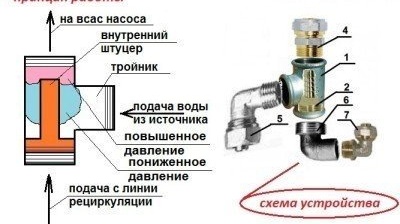
Components for self-assembly of the ejector: 1- tee; 2 - fitting; 3 - vinyl chloride tube; 4 - adapter for metal-plastic pipe; 5 - angle NhMP; 6-angle NhV; 7 - angle NhMP
The manufacturing process of the ejector takes place in several stages:
- Fitting preparation. The hexagonal element of the part needs to be turned, having received from it a cone with a base slightly smaller than the diameter of the external thread of the fitting. The threaded part is shortened, no more than four threads can be left. Then, with a thread-cutting tool, we straighten the tainted thread and continue it with approaching the conical part, so that the fitting can be easily screwed into the tee.
- Ejector Parts Fitting. Screw the fitting into the tee as far as it will go with the narrow part. In this case, the outlet should not go beyond the edge of the middle hole of the tee by more than 1-2 mm. In addition, the internal thread of the tee must be left with no less than 4 threads. If it turns out that there is not enough thread in the tee, we grind the fitting thread a little more. If the outlet of the fitting is short, we put a vinyl tube on it, if it is long, we grind it.
Device assembly
- . We check the compliance of the parts and finally screw in the fitting, be sure to seal the thread with any suitable sealant. Next, we collect from the prepared elements the necessary adapter for mounting on the pipe.
An ejector is an indispensable device for increasing the pressure of water and providing protection against unwanted dry running of the feed unit. It can be purchased complete with a pumping station, or you can assemble it yourself. In any case, it will work long and efficiently, ensuring an uninterrupted supply of water even from a deep well.
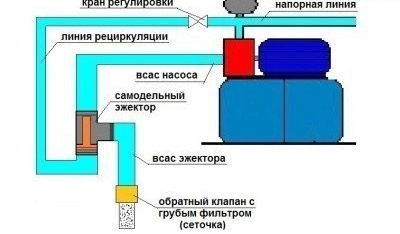
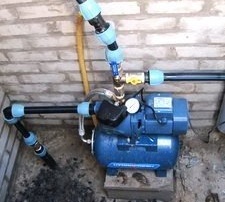

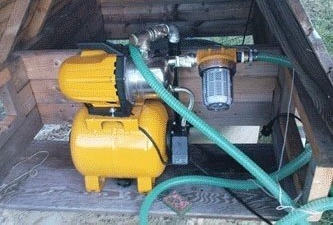
2 comments